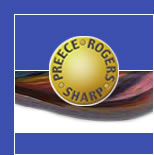|
Chapter Introduction
| Web
Resources | Assignment
comments | Teaching Materials
Below is additional material associated with
the topics covered in chapter 1.

DESIGN PRINCIPLES
There are many articles discussing design
principles on the web. Why not start by reading articles written
by Don Norman. Visit his online publications at his website
and take a look in particular at the papers on affordances
and constraints:
Norman, D. A. (1999). Affordance,conventions, and design.
Interactions 6, 3 (May. 1999), Pages 38 - 43 Copyright 1999,
Donald A. Norman. All rights reserved.
See:
http://www.jnd.org/dn.mss/affordances-and-design.html
http://www.jnd.org/dn.mss/affordances-interactions.html

INTERACTION
DESIGN
Terry Winograd's article
mentioned in chapter 1, gives an in-depth explanation of interaction
design: "From
Computing Machinery to Interaction Design"
Published online by permission from Peter Denning and Robert
Metcalfe (eds.) Beyond Calculation: The Next Fifty Years of
Computing, Springer-Verlag, 1997, 149-162.
A thought-provoking essay
on "What
is interaction design?" written by Craig Marion (an
information designer and architect), originally published
in the May 1999 issue of News and Views, the publication of
the Philadelphia Metro Chapter of the Society for Technical
Communications. In it he discusses where the term interaction
design came from and how it relates to HCI and information
design. Written in an accessible form, with some nice illustrations.
The ACM's magazine Interactions
(available online if you
are a member of the digital library) is a wonderful up-to-date
source of information. It includes articles on current research,
columns, book previews and reflections. The SIGCHI
bulletin (a supplement to interactions) has a column on 'Beyond
the Desktop', which addresses the challenges of this new paradigm.
|
